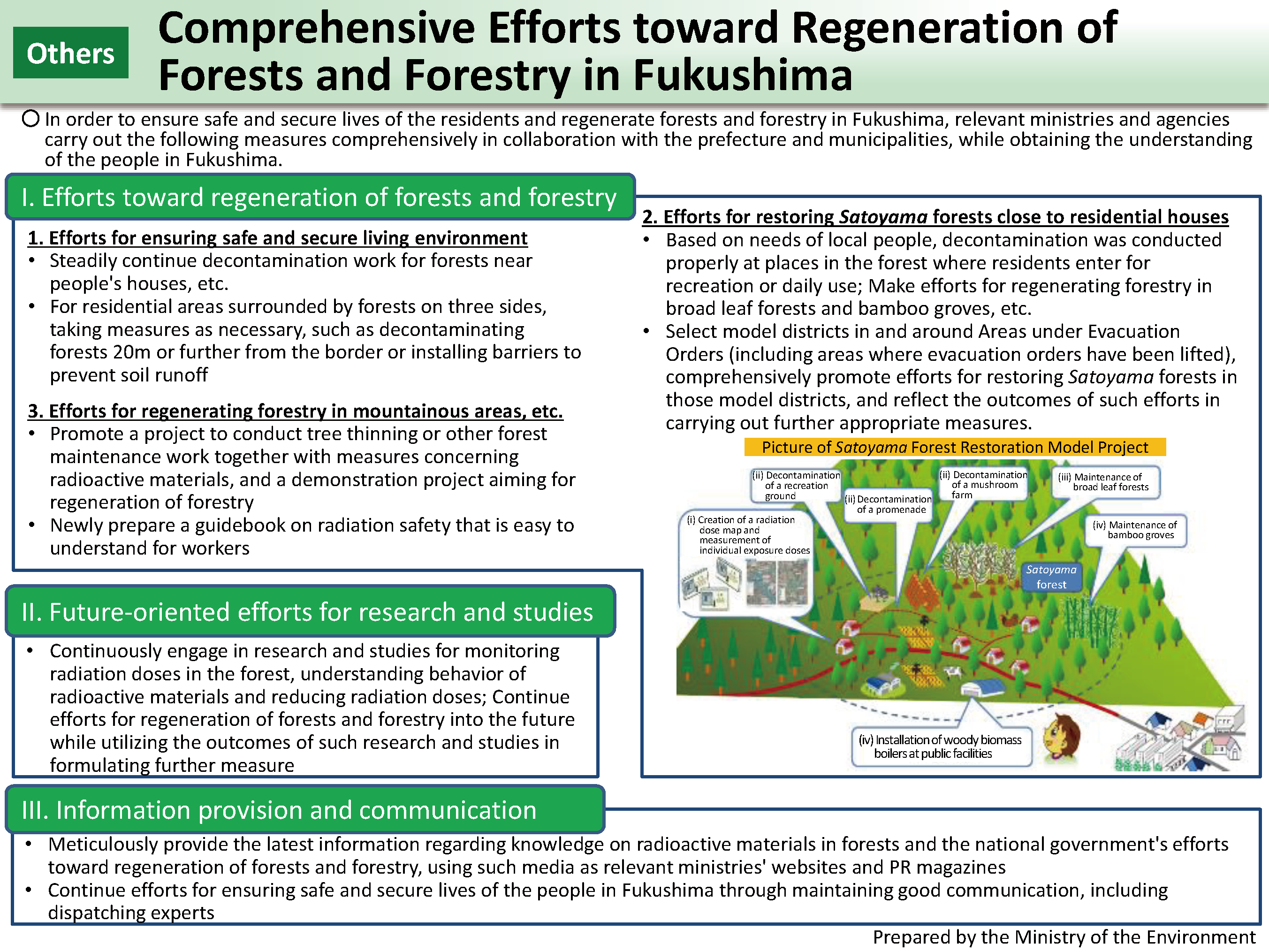Comprehensive Efforts toward Regeneration of Forests and Forestry in Fukushima
In addition to decontamination, comprehensive efforts for regenerating the forestry industry and ensuring safe and secure lives of the residents are indispensable for the regeneration of forests and forestry in Fukushima Prefecture. Based on the guideline, "Comprehensive Efforts toward Regeneration of Forests and Forestry in Fukushima," which was compiled by the Reconstruction Agency, the Ministry of Agriculture, Forestry and Fisheries, and the Ministry of the Environment in March 2016, relevant ministries and agencies have been carrying out measures comprehensively for those purpose, while obtaining the understanding of the people in Fukushima. In November 2020, the outcome of the Satoyama Forest Restoration Model Project, which had been conducted in 14 districts based on the guideline, was compiled and published. In FY2020 onward, efforts for restoring Satoyama forests will be continued by expanding the coverage as the Satoyama Forest Restoration Project.
According to the knowledge obtained at the Environment Restoration Panel established in the Ministry of the Environment, it is found that removal of sedimentary organic materials at locations 20m or further from the border of the forest adjacent to houses and farmland, etc. has little effect in reducing ambient dose rates at the forest border. Also, broad removal of sedimentary organic materials in forests may even make things worse, in ways such as increasing bad effects on trees due to causing erosion of dirt, etc. containing radioactive cesium or impoverishing the soil. Accordingly, under the basic policy to prioritize areas especially necessary from the perspective of protecting human health, decontamination of forests has been conducted within approx. 20m from the borders of the forests adjacent to houses or farmland, etc., in principle.
- Included in this reference material on March 31, 2017
- Updated on March 31, 2021

